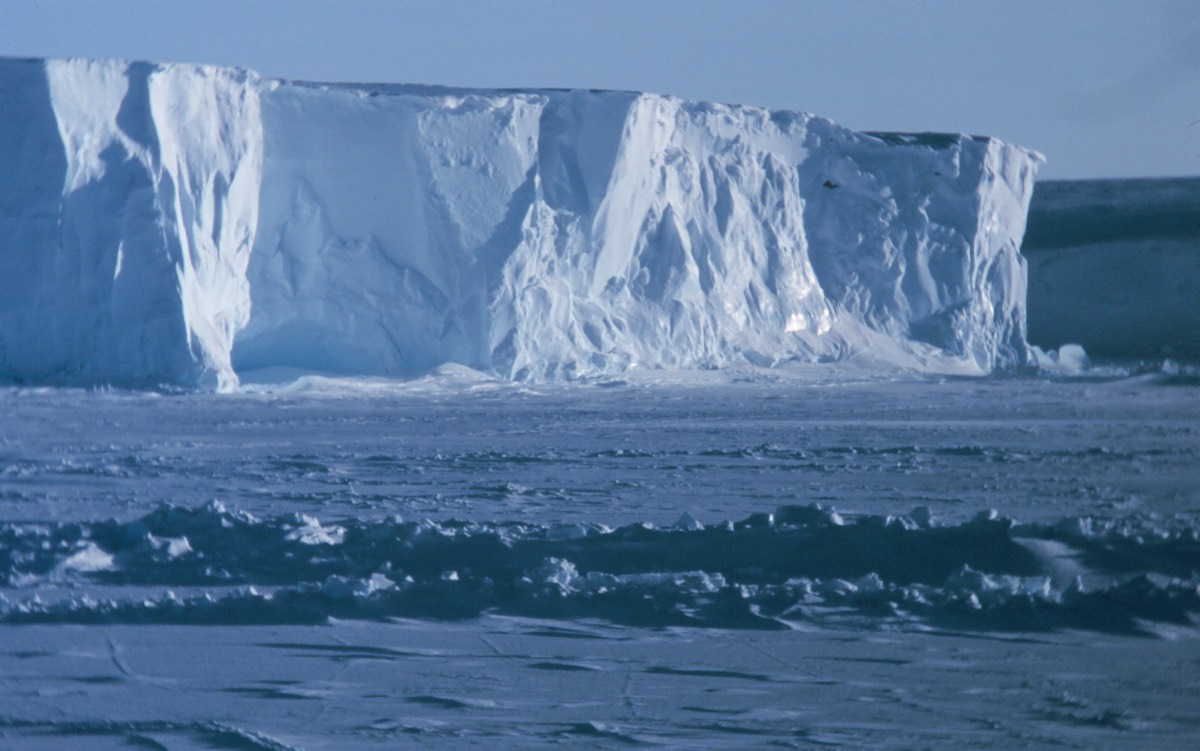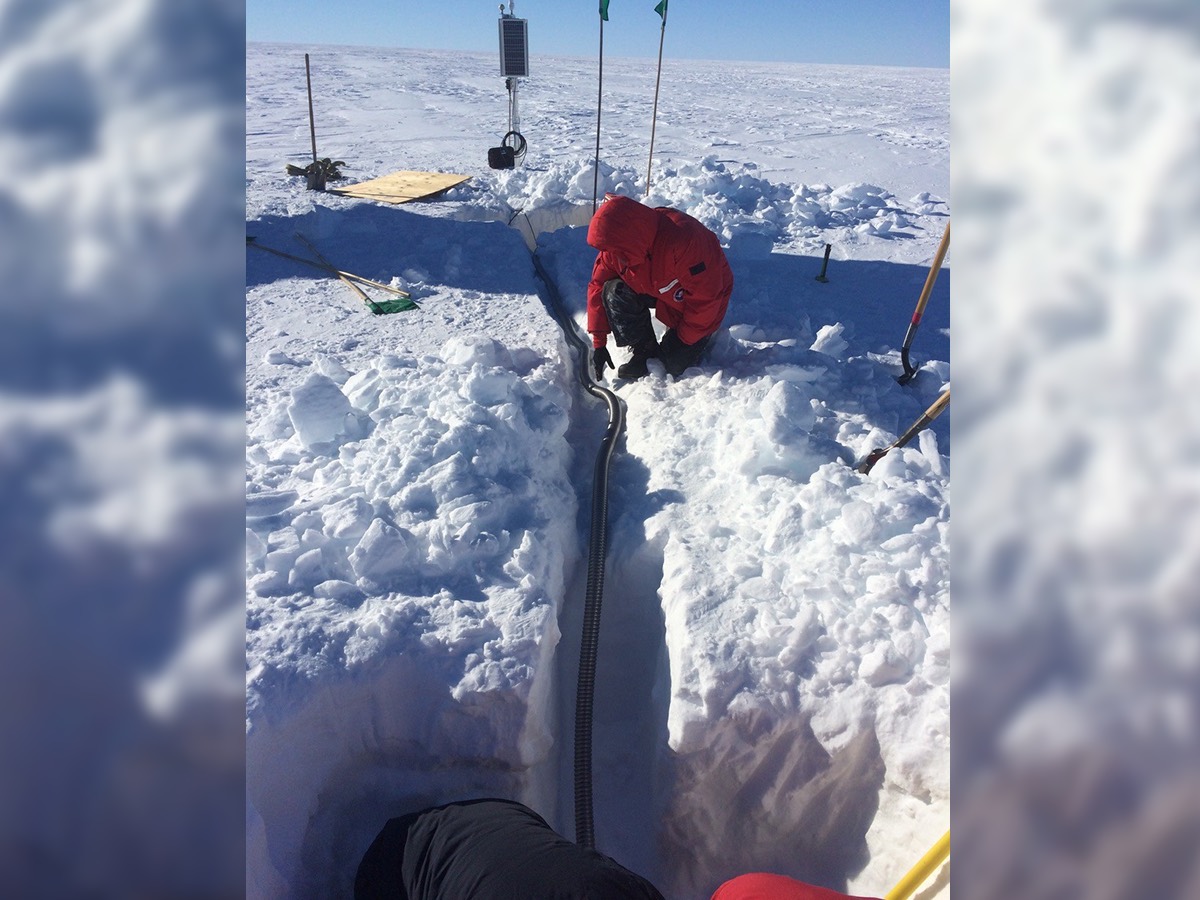Shhh … The Ice in Antarctica Is 'Singing'
While the ice shelf's "music" is played at a frequency that isn't audible to human ears, the researchers were able to eavesdrop using seismic sensors, they wrote in a new study.
When they listened to recordings gathered over two years on the ice shelf, they found that the ice was almost constantly "singing" at a frequency of 5 hertz — five cycles per second — its doleful hum generated by the blowing of regional and local winds. They also learned that features of its song changed in response to events that affected the surface snow and ice, such as storms that shifted snow dunes' positions, or excessive melting. [Photos: Diving Beneath Antarctica's Ross Ice Shelf]
Scientists detected the vibration unexpectedly; they had installed 34 seismic sensors, on the Ross Ice Shelf from 2014 to 2017, to monitor other aspects of ice shelf behavior. But when they reviewed the readings, they noticed that the topmost snow layer was vibrating practically all the time from the active winds that whipped over its uneven surface, causing a seismic hum.

"It’s kind of like you're blowing a flute, constantly, on the ice shelf," lead study author Julien Chaput, a geophysicist and mathematician at Colorado State University in Fort Collins, said in a statement.
The pitch of the hum also changed subtly under certain conditions; after powerful storms altered the shape of the snow dunes, and when a warming event in January 2016 led to surface melt, they reported in the study.

Monitoring the "song" of the ice shelf could allow scientists to track shifts in surface ice remotely, and practically in real time. This could help them piece together a more complete picture of ice shelf stability, and it could raise an early red flag if the shelf becomes vulnerable to collapse, the study authors concluded.
"Basically, what we have on our hands is a tool to monitor the environment, really — and its impact on the ice shelf," Chaput said in the statement.
Sign up for the Live Science daily newsletter now
Get the world’s most fascinating discoveries delivered straight to your inbox.
The findings were published online Oct. 16 in the journal Geophysical Research Letters.
Originally publishedon Live Science.

Mindy Weisberger is an editor at Scholastic and a former Live Science channel editor and senior writer. She has reported on general science, covering climate change, paleontology, biology and space. Mindy studied film at Columbia University; prior to Live Science she produced, wrote and directed media for the American Museum of Natural History in New York City. Her videos about dinosaurs, astrophysics, biodiversity and evolution appear in museums and science centers worldwide, earning awards such as the CINE Golden Eagle and the Communicator Award of Excellence. Her writing has also appeared in Scientific American, The Washington Post and How It Works Magazine. Her book "Rise of the Zombie Bugs: The Surprising Science of Parasitic Mind Control" will be published in spring 2025 by Johns Hopkins University Press.










